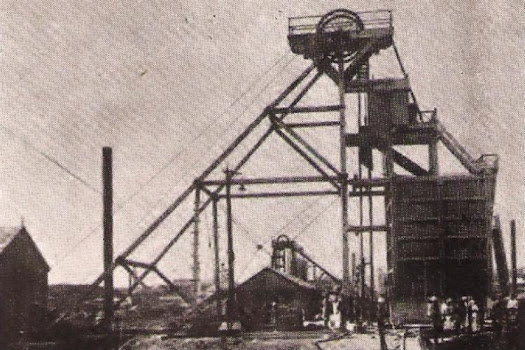RAILWAY LINE
With so much mining activity going on in the region and consequently the growth in the population, the need for better connectivity from the Kolar Gold Mining areas was badly felt. People had to travel by bullock cart to Bowringpet (Bangarapet) Station which was about 10 miles from KGF in order to board trains to Madras, Bangalore, etc as Bowringpet was on the Madras-Bangalore Railway link line.
The John Taylor and sons Company approached the Government of Mysore and the Maharaja of Mysore and prevailed upon them, for the need of a direct rail link between KGF and Bowringpet (Bangarapet).
Both the British Government of Mysore and also the Maharaja of Mysore, were fully aware of the developments taking place in the Kolar region as both greatly benefited from the Mining industry in the form of taxes and levies.
Accordingly, in 1894, the Mysore Government financed the construction of a Branch Railway line, 10 miles in length connecting all the 5 mines between Mysore Mine (Marikuppam) and Bowringpet Junction (Bangarapet) to the Bangalore - Madras Railway line and the South Maratta Railway.
New Railway Stations at Coromandel, Oorgaum, Champion Reefs, and Marikuppam, was established with a local train connecting Bowringpet and Marikuppam twice a day. This was a real blessing for people wishing to travel beyond Bowringpet to Kuppam, Jolarpet, Arkonam, Katpadi, etc.
ELECTRIFICATION OF MINES
From the inception of the mines in 1880 until the year 1902 all the machinery in the Kolar Gold Mines were worked by steam power. Feeling the need for captive electric power, The John Taylor and Sons Company prevailed upon the British Government in Mysore to provide Electric power to the Company to meet its huge need for electricity, for running the machines, and various other needs.
Accordingly, the Government of Mysore State decided in 1899 to utilize its natural waterfalls for producing electricity. They identified various sites but ultimately the site for setting up the power station was a point on the River Cauvery, which was east of Mysore city and south of Bangalore where the river divided into two forming the island of Shivasamudram.
The Cauvery Power Scheme was thus initiated in 1900 by the Mysore Government, under K Seshadri Iyer, the then Diwan of Mysore. The credit, however, for the Cauvery Falls Power Works was attributed to Captain Lotbiniere, the then Deputy Chief Engineer of the Mysore Government.
Incidentally, the same site was earlier identified for its potential in 1894, by Edmund Carrington, an electric engineer from Mysore. He had applied for a concession from the Mysore Government, to tap the water power at Shivanasamudra. He, along with Mr. Holmes from Madras and Colonel Henderson, a British resident Mysore, recognized that long-distance transmission power was possible at this point of the Shivasamudram Falls.
A little known fact which many are not aware of is that the city of Bangalore was able to get electricity in 1905 only because this long transmission line had to pass near Bangalore on the way to KGF. Bangalore thus became the First Indian City to have a power supply.






No comments:
Post a Comment